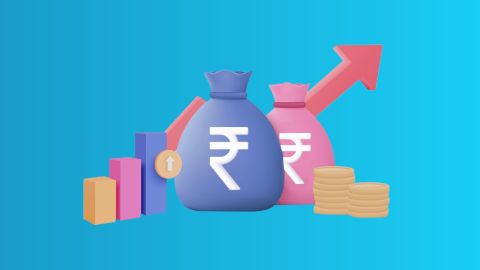Engaging in green practices like reducing waste and carbon emissions solidifies a company's green credentials. By consistently communicating these efforts, companies attract environmentally-conscious consumers and investors, thus driving sales and fostering brand loyalty. To understand how these practices fit within a broader business environment, it is essential to consider the dynamics shaping companies today.
What is green marketing?
Green marketing refers to the practice of developing and promoting products or services based on their environmental benefits. It involves sustainable and eco-friendly initiatives such as using recycled materials, reducing carbon footprints, and ensuring energy efficiency. Companies adopting green marketing highlight their commitment to environmental conservation, appealing to eco-conscious consumers. This approach not only helps in differentiating brands but also fosters a positive public image by aligning business practices with global sustainability goals. In essence, green marketing integrates environmental considerations into all aspects of marketing and product development, creating a responsible and ethical business ethos. A crucial part of this process involves understanding assets and how sustainable investments play a role.
How does green marketing work?
Green marketing works by integrating eco-friendly principles into every facet of a company’s operations and marketing strategies. It starts with the design and production of goods that minimise environmental impact, such as using sustainable materials and energy-efficient processes. Companies then promote these products through green advertising, highlighting their environmental benefits. Additionally, businesses may adopt green certifications to build consumer trust, supporting a long-term approach to entrepreneurship in the green sector.
Examples of green marketing
- Patagonia: Promotes sustainable outdoor clothing and encourages customers to buy only what they need.
- IKEA: Uses renewable energy and sustainably sourced materials for their products.
- Tesla: Markets electric vehicles as a green alternative to traditional cars.
- Unilever: Commits to reducing its environmental impact through sustainable sourcing and eco-friendly products.
- Starbucks: Introduced recyclable cups and offers discounts to customers who bring reusable ones.
These examples demonstrate how companies leverage green marketing to appeal to eco-conscious consumers while contributing positively to the environment. Additionally, a key part of managing any business is ensuring the right level of working capital to sustain operations while transitioning to greener initiatives.
Benefits of green marketing
- Enhanced brand image: Companies are seen as responsible and ethical.
- Competitive advantage: Differentiates products from competitors.
- Cost savings: Through energy efficiency and waste reduction.
- Increased customer loyalty: Attracts environmentally-conscious consumers.
- Regulatory compliance: Meets government and environmental regulations.
- Positive impact: Contributes to environmental sustainability.
The importance of green marketing
- Consumer demand: Growing preference for eco-friendly products.
- Regulatory pressure: Adherence to environmental laws and regulations.
- Market differentiation: Stands out in a competitive market.
- Corporate responsibility: Aligns with ethical business practices.
- Investor attraction: Appeals to socially responsible investors.
- Long-term sustainability: Ensures business viability and environmental conservation.
By aligning your marketing strategy with principles that demonstrate corporation goals, you can effectively cater to this growing demand.
Green marketing strategy
- Sustainable product design: Develop products with minimal environmental impact.
- Eco-friendly packaging: Use biodegradable or recyclable materials.
- Energy-efficient processes: Implement green manufacturing practices.
- Transparent communication: Promote green credentials honestly.
- Consumer education: Inform customers about the benefits of green products.
- Partnerships: Collaborate with environmental organisations.
The impact of green marketing
- Consumer behaviour change: Encourages eco-friendly purchasing decisions.
- Market growth: Expands the market for sustainable products.
- Environmental conservation: Reduces pollution and resource depletion.
- Corporate reputation: Enhances public perception and trust.
- Economic benefits: Drives innovation and cost efficiency.
- Regulatory compliance: Meets environmental standards and avoids penalties.
Does green marketing work?
Green marketing does work when implemented genuinely and strategically. Companies that integrate authentic green practices often see increased brand loyalty and customer trust. However, success depends on the company's commitment to sustainability and transparent communication. Green marketing fails when companies engage in greenwashing—misleading consumers about the environmental benefits of their products. Genuine green marketing can lead to long-term benefits, including cost savings, competitive advantage, and enhanced reputation. It appeals to the growing demographic of eco-conscious consumers, driving both sales and positive environmental impact.
6 green marketing ideas
- Eco-friendly packaging: Shift to biodegradable, recyclable, or reusable packaging to reduce waste and appeal to green consumers.
- Energy-efficient products: Develop and promote products that consume less energy, like LED lights or solar-powered gadgets.
- Sustainable sourcing: Use raw materials from sustainable sources, such as FSC-certified wood or organic cotton.
- Green certifications: Obtain certifications like Energy Star, LEED, or Fair Trade to build consumer trust and validate green claims.
- Digital marketing: Reduce paper use by focusing on digital marketing channels such as social media, email, and online ads.
- Community initiatives: Engage in local environmental initiatives, such as tree planting drives or clean-up campaigns, to build a positive community presence.
What is greenwashing?
Greenwashing refers to the practice of companies misleading consumers into believing that their products or services are environmentally friendly when they are not. This deceptive marketing strategy involves making false or exaggerated claims about the environmental benefits of a product, often to capitalise on the growing consumer demand for sustainable options. Greenwashing undermines genuine green efforts and can lead to consumer distrust. Examples include vague terms like "eco-friendly" without substantiation, hidden trade-offs where one green aspect is highlighted while ignoring harmful effects, and irrelevant claims that do not align with significant environmental impact.
Conclusion
Green marketing is a crucial strategy for modern businesses aiming to meet the rising demand for eco-friendly products and practices. Genuine implementation of green marketing strategies not only enhances brand reputation but also contributes to long-term sustainability. However, businesses must avoid greenwashing to maintain consumer trust and achieve real environmental benefits. Companies can support these initiatives with business loans to invest in sustainable technologies and practices, ultimately driving both economic and ecological success.
Here are some of the key advantages of a business loan from Bajaj Finance that make it an ideal choice for your business expenses:
- Rapid disbursement: Funds can be received in as little as 48 hours of approval, allowing businesses to respond promptly to opportunities and needs.
- Simplified application process: Online applications streamline the process, reducing paperwork and saving time.
- Competitive interest rates: The interest rates for our business loans range from 14 to 26% per annum.
- Flexible repayment schedules: Repayment terms can be tailored to align with the business's cash flow, helping manage finances without strain. You can choose a tenure ranging from 12 months to 96 months.




